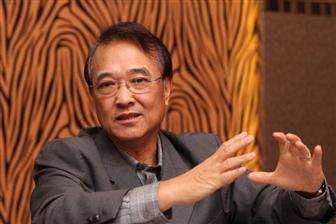
- Register
- Login
34°C
- Article
- . (0)
- Related content
The Taiwan government has decided to strengthen development of renewable energy, mostly PV and wind power, as it seeks to phase out nuclear power, and this has afforded opportunities for local solar cell makers to survive, according to Ellick Liao, chairman of solar cell maker TSEC.
If the government had not pledged support for PV power, many of the local solar cell makers would have begun to end operations, Liao noted.
Taiwan’s PV supply chain focuses on solar cell production and are weak in upstream segments (polysilicon and solar wafer productions), and downstream ones (PV modules, power stations and rooftop systems), Liao indicated.
With an incomplete supply chain, Taiwan solar cell makers have been facing fluctuations in overseas markets arising from government policy changes and impacts of US and EU antitrust tariffs, Liao said.
Taiwan’s solar cell makers heavily relies on outsourcing orders from China-based PV module makers, who have increased in-house production and reduced outsourcing orders and prices accompanying them, Liao noted.
Thanks to the Taiwan government’s boosting domestic demand for PV installation, Taiwan-based solar cell makers now have opportunities of extending production to PV modules, Liao indicated.
However, PV module production faces price competition from China-based and international vendors and therefore production cost is key to competitiveness, Liao said, adding Taiwan’s cell makers must adopt fully- or highly-automated production lines for PV modules.
TSEC is constructing a fully-automated PV module factory with initial annual production capacity of 500MWp in southern Taiwan, Liao said. The factory will focus on high-efficiency PV modules by using TSEC-produced PERCs (passivated emitter and rear cells) to differentiate from imported ones, Liao indicated.
With PERC accounting for 80% of total solar cell production capacity, TSEC is the second largest among Taiwan-based PERC makers, Liao noted.
Since Taiwan-based PV module makers are unable to compete with China-based ones in overall production cost, overseas marketing channels and government support, the factory will focus on the domestic market initially and is likely to tap overseas markets if its development goes well and market conditions are favorable, Liao indicated.
TSEC has also formed a subsidiary for investing in and undertaking EPC (engineering, procurement, construction) and operation of PV power stations and rooftop systems in Taiwan, Liao said.

TSEC chairman Ellick Liao
Photo: Digitimes file photo
-
Asustek makes progress in restructure
Before Going to Press | 10h 32min ago
-
Samsung to expand NAND chip capacity in China
Before Going to Press | 10h 34min ago
-
LGD to expand OLED panel supply to Sony in 2019
Before Going to Press | 10h 35min ago
-
Oppo becomes leader in Taiwan Android smartphone market
Before Going to Press | 10h 36min ago
-
Silicon Works seeking orders from China, Taiwan
Before Going to Press | 11h 50min ago
-
Taiwan passive component firms gearing up for seasonal demand
Before Going to Press | Aug 28, 19:54
-
MOSFET supply to remain tight through end-2017
Before Going to Press | Aug 28, 19:51
-
EIH, Sony to jointly develop e-notebooks
Before Going to Press | Aug 28, 19:50
-
E&R Engineering shipping laser cutting machines to Intel in small volume, sources say
Before Going to Press | Aug 28, 19:49



- China AMOLED panel capacity expansion forecast, 2016-2020
This Digitimes Research Special Report examines the China AMOLED industry, focusing on the expansion capacity of the makers, the current implementation plans of major smartphone vendors in the market and the technological hurdles faced by the China makers.
- Global AP demand forecast, 2017-2020
Digitimes Research expects global AP shipments to surpass the 1.9 billion mark in 2017, with smartphones remaining the main application. Qualcomm will be leading the market in 2017, as other players continue playing catch up and scramble for funds to invest in more diverse applications.
- Global notebook shipment forecast, 2017 and beyond
This Digitimes Special Report examines key factors in the notebook industry, including products, vendors and ODMs, that will affect total shipments in 2017 and through 2021.









